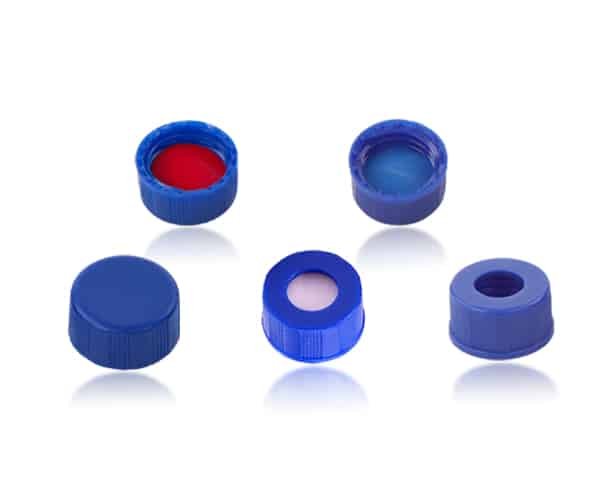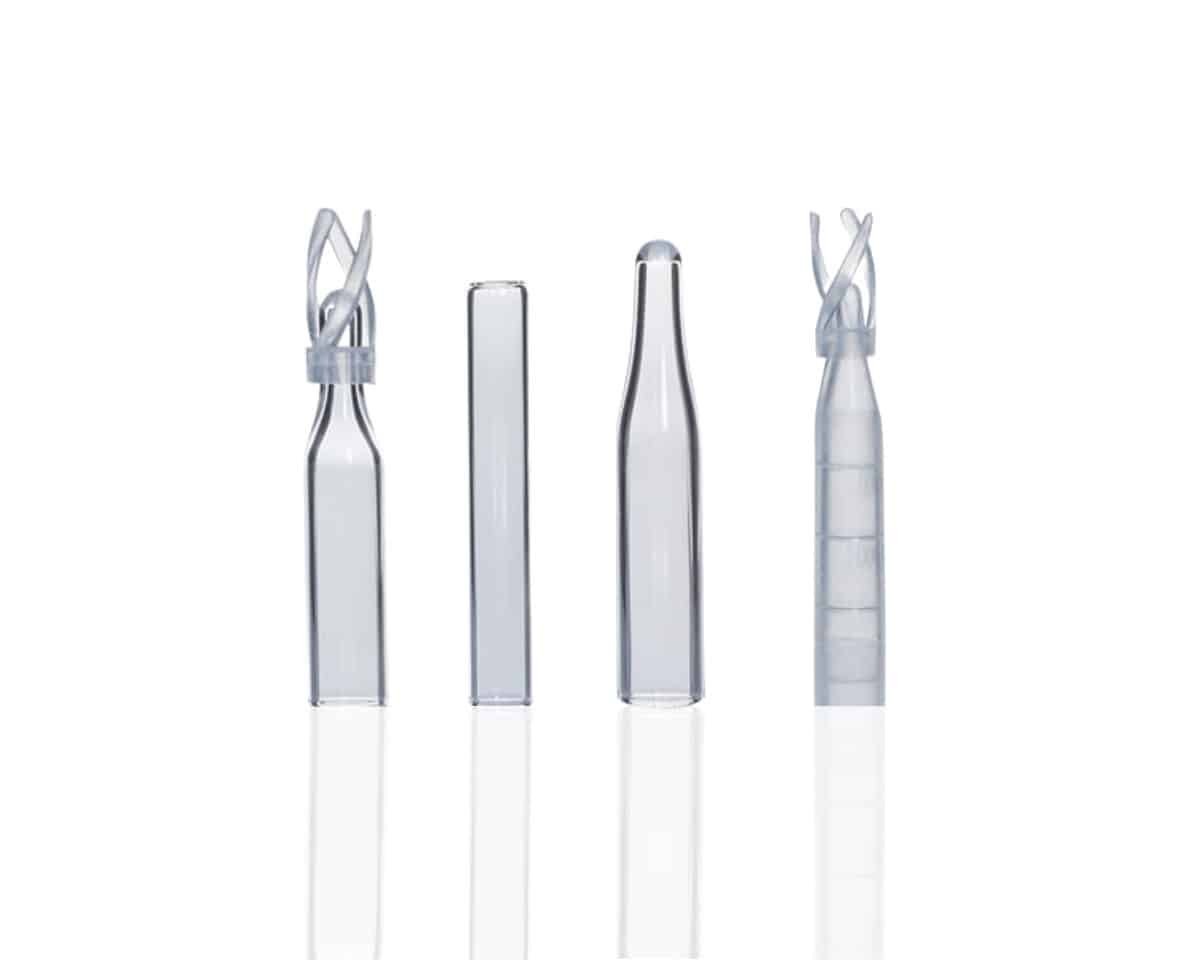Introduction
When you’re working with LC-MS (Liquid Chromatography-Mass Spectrometry), the smallest detail can make or break your results. One such detail that’s often overlooked? The HPLC vial. While it may seem like a basic container, in the context of LC-MS, your choice of vial has a direct impact on sample integrity, background noise, and ultimately, data accuracy.
Let’s be honest, have you ever run a beautifully designed LC-MS method only to find strange background peaks or inconsistent signals? More often than not, the culprit isn’t the instrument—it’s the vial. In LC-MS, where sensitivity is everything, your vial must be chemically inert, clean, and tailored to low-volume, trace-level analysis.
So what exactly do you need to look for in an HPLC vial for LC-MS applications? Let’s walk through the essentials—together.
Material Considerations for LC-MS Vials
When selecting a vial for LC-MS use, material compatibility is one of the most critical aspects. Unlike standard HPLC, LC-MS is ultra-sensitive, and even minor leaching or adsorption from the vial can introduce significant noise or loss of analyte.
1. Low Adsorption Glass Vials
Low adsorption borosilicate glass vials are commonly used in LC-MS because they offer:
- Excellent chemical inertness
- Low risk of analyte adsorption
- Resistance to strong organic solvents
These vials are typically silanized to minimize interactions between analytes and the vial walls. This is especially important when dealing with sticky compounds like peptides, small proteins, or highly polar analytes.
But… glass isn’t always perfect. In some cases, especially when trace metals are involved, even low adsorption glass may cause minor signal suppression.
2. Polypropylene (PP) Vials
Plastic vials, especially polypropylene, have their place too. They offer:
- Reduced risk of breakage
- Compatibility with aqueous or biological matrices
- Cost-effectiveness for high-throughput labs
However, plastic vials come with risks:
- Potential for solvent leaching
- Susceptibility to deformation under heat or pressure
- Higher background contamination in some mass spectrometry workflows
So, which should you choose? If your LC-MS method uses organic solvents, or you’re doing trace-level analysis, glass vials are often the safer option. But for biological samples or screening workflows, polypropylene may be sufficient.
What do you use most in your lab—glass or plastic? Why?
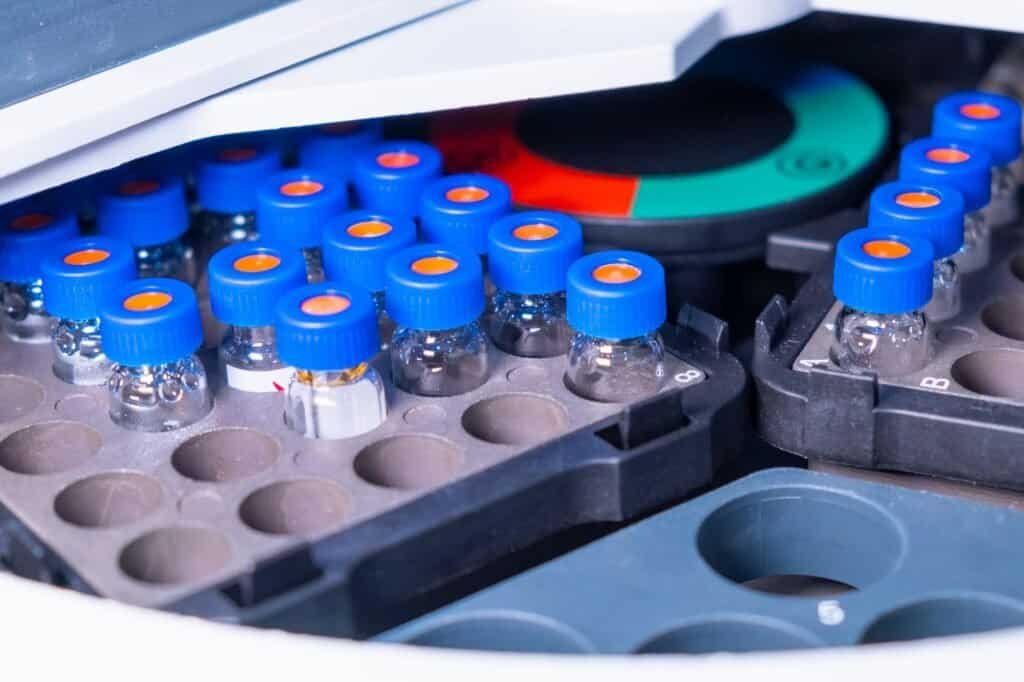
Avoiding Contaminant Leaching: Best Practices
One of the biggest challenges in LC-MS analysis is avoiding contaminants that can leach from the vial, cap, or septum into the sample. Here’s how you can prevent that from happening:
1. Use Certified Vials for LC-MS
Always choose vials that are certified for LC-MS use. These are manufactured under stricter cleanliness protocols and tested to ensure low background signals.
2. Be Mindful of Cap and Septum Materials
Caps and septa can be a hidden source of contamination. Here’s how to select the right ones:
- Use PTFE/silicone septa, which provide a clean seal and are resistant to solvent interaction.
- Avoid rubber or plastic-based septa unless they’re specifically certified for LC-MS.
3. Avoid Reactive Solvent Combinations
Some solvent combinations—especially acidic modifiers like formic acid or TFA—can extract unwanted compounds from plastic caps or liners. Stick to LC-MS-grade solvents and limit exposure time when using these additives.
4. Pre-Wash If Necessary
Some labs choose to pre-rinse their vials and caps with methanol or acetonitrile to eliminate any residual manufacturing contaminants.
Tip: If you’re noticing recurring ghost peaks in your blanks, try switching vial brands or materials—contamination often starts here.
Handling Ultra-Low Volume Samples
In LC-MS workflows, you’re often working with precious or limited samples—sometimes just a few microliters. Using standard 2 mL vials can lead to sample loss or incomplete injection. That’s where vial inserts come in.
1. Glass vs. Plastic Inserts
For LC-MS, glass inserts are preferred due to:
- Lower background interference
- Superior solvent compatibility
- Minimal risk of sample adsorption
Plastic inserts may be fine for aqueous matrices but tend to absorb analytes or leach plasticizers, which is unacceptable for sensitive LC-MS analysis.
2. Conical vs. Flat Bottom Inserts
- Conical inserts allow the sample to pool at the tip, ensuring full needle access—even with volumes as low as 10 µL.
- Use spring-loaded inserts to prevent shifting in the vial, especially for autosampler use.
3. Reduce Dead Volume
Inserts reduce dead volume, ensuring your autosampler needle hits the target every time, improving injection accuracy and repeatability.
Have you tried using inserts with LC-MS? If not, you’re likely leaving valuable sample behind.
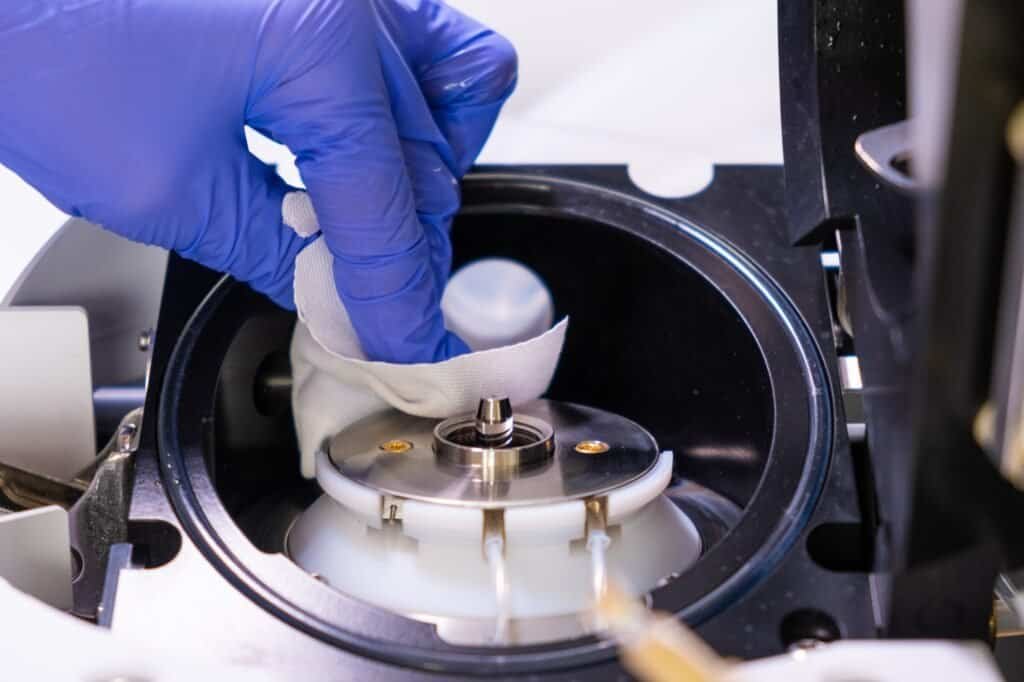
Reducing Background Noise: Tips for Clean LC-MS Vials
Nothing kills a good LC-MS run like unexpected background noise. Fortunately, with the right approach, you can keep your chromatograms clean and peaks sharp.
1. Choose LC-MS Certified Vials
These vials are pre-cleaned and manufactured under low-particle environments to avoid introducing residual siloxanes, surfactants, or phthalates.
2. Use Solvent-Compatible Seals
Avoid septa that bleed under pressure or heat. Always go for low-bleed PTFE/silicone combinations that maintain integrity under electrospray conditions.
3. Clean Vials Before Use (Optional)
While pre-cleaned vials are ideal, you can add another layer of security by rinsing with LC-MS grade methanol or acetonitrile, then drying under nitrogen or in a clean oven.
4. Store Properly
Even the cleanest vials can become contaminated if stored incorrectly. Always:
- Store in closed containers
- Avoid direct sunlight or high humidity
- Wear gloves when handling to prevent oil transfer
Successful Application Example: High-Sensitivity LC-MS Analysis
Let’s look at how proper vial selection improved outcomes in a real lab:
A pharmaceutical lab conducting trace-level impurity analysis for a new drug candidate initially saw inconsistent signals and background peaks in their LC-MS runs. Despite optimizing the gradient and mass settings, the problem persisted.
What They Did:
- Switched from generic glass vials to LC-MS certified low-adsorption vials
- Replaced septa with low-bleed PTFE/silicone liners
- Started using glass conical inserts for small-volume injections
Results:
- Background noise decreased by over 40%
- Signal-to-noise ratio improved by 3x
- Fewer failed runs and better detection of low-abundance impurities
Sometimes, the solution isn’t in the instrument—it’s in the vial.
Conclusion
In LC-MS workflows, the vial you choose plays a vital role in your results. From minimizing background noise to maximizing sample recovery, using the right vials, caps, and inserts helps ensure clean, accurate, and reproducible data.
Whether you’re handling ultra-low volume samples or trying to eliminate those stubborn ghost peaks, a little attention to your vial selection can go a long way.
So next time you’re prepping a batch, ask yourself:
Are my vials truly LC-MS ready?
Mastelf, with over 13 years of experience in chromatography vials since established in 2011, we can help you find the exact vials you need for your applications.
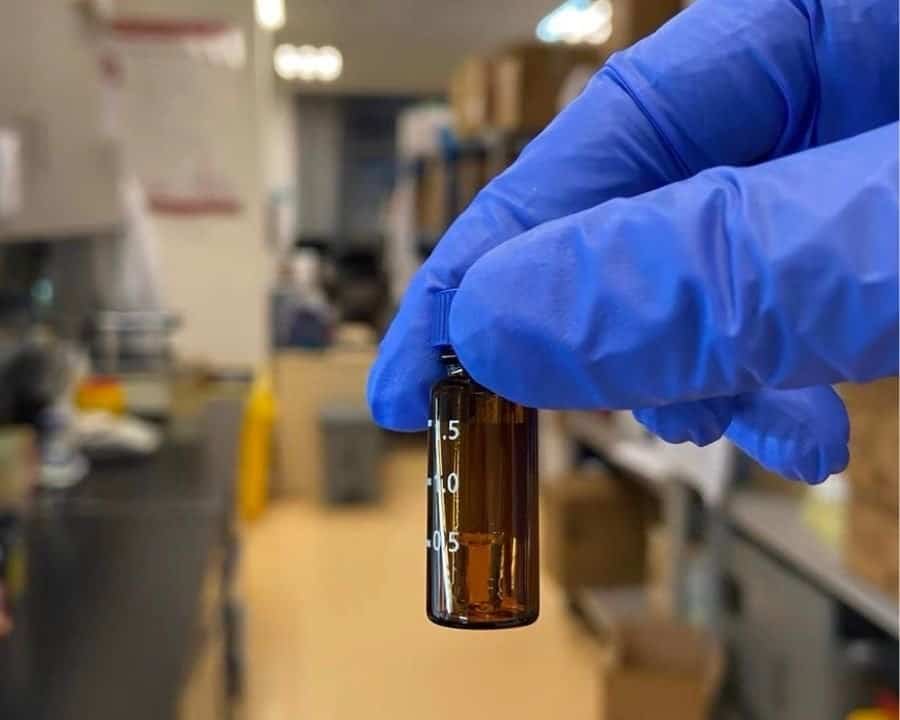
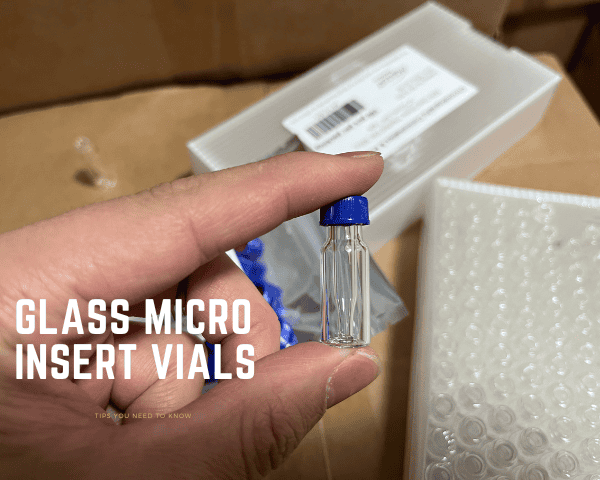
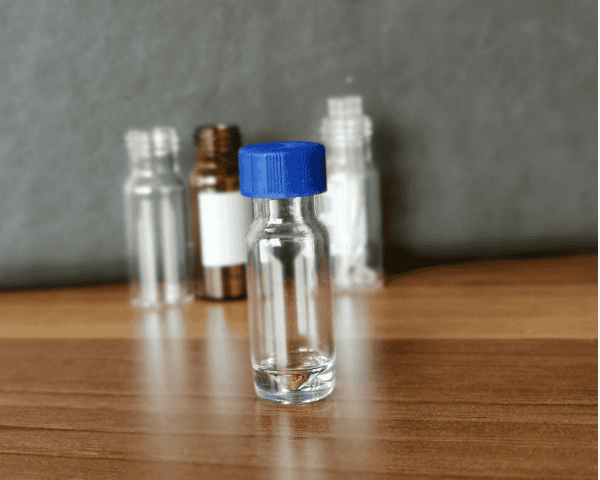
Our expertise ensures that you get reliable and precise products tailored to your specific requirements. Whether you’re in pharmaceuticals, research, or any other industry relying on HPLC, we understand your needs and are here to support you in making the right purchase.
Reach out to Mastelf, and let us assist you in procuring the perfect vials for your work.
FAQ
1. Can I use standard HPLC vials for LC-MS?
Technically yes, but it’s risky. LC-MS certified vials are designed to prevent contamination and reduce background noise.
2. What’s the best vial material for LC-MS?
Low-adsorption glass is preferred for most applications due to its inertness and low extractables.
3. Are plastic inserts suitable for LC-MS?
Not ideal. Glass inserts are better for trace-level analysis due to reduced leaching.
4. How can I tell if vial contamination is affecting my data?
Look for ghost peaks in your blank runs or elevated baseline noise in low-concentration injections.
5. Should I clean vials before using them in LC-MS?
It’s good practice to rinse even pre-cleaned vials with LC-MS-grade solvent, especially for ultra-trace analysis.




